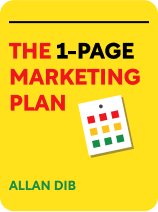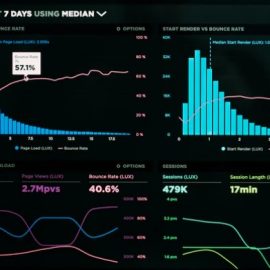
This article is an excerpt from the Shortform book guide to "The 1-Page Marketing Plan" by Allan Dib. Shortform has the world's best summaries and analyses of books you should be reading.
Like this article? Sign up for a free trial here .
What is direct-response marketing? Why should small businesses use it?
Small businesses will often try to appeal to a large portion of the market. However, marketing expert Allan Dib argues they should instead focus on use direct-response marketing to target potential customers.
Find out how direct-response marketing works below.
What Is Direct-Response Marketing?
Small business owners often try to emulate big business by using “mass marketing” to increase general awareness of their product or to create a positive image. However, Dib contends that this type of marketing wastes money because small businesses need to reach a targeted group of likely customers rather than a universe of people, the vast majority of whom won’t buy.
He believes the most effective marketing strategy for a small business owner is direct-response marketing. (Shortform note: Dib often uses the terms marketing and advertising interchangeably, and he refers to advertising as both a strategy and tactic. The American Marketing Association defines marketing as identifying, predicting, and meeting customer needs. In contrast, advertising is a specific tactic—paying to place your company’s messaging or branding in specific media.)
Direct-response marketing is targeted to prospects most likely to be interested in your product or service; ads focus on solving their specific problem, and they’re designed to prompt an immediate response by encouraging people to take a specific action. For example, a financial planner might aim to get parents of high school-age children to sign up for a college finance webinar. Other “calls to action” include visiting a web page, signing up for a free report or newsletter, joining an email list, or buying.
Unlike mass marketing to build brand awareness, direct-response ads generate sales leads (potential customers you can contact). Further, Dib says for every $2 you spend on direct-response advertising, you generate about $10 in profits from sales—so it’s a cost-effective way for small businesses to reach customers.
(Shortform note: Other marketing strategists cite several disadvantages of direct-response marketing, including the difficulty of making your message stand out among many, and laws regulating mass emails and direct mail, which are the typical media for direct-response advertising.)
| The Decline of Mass Marketing Now we know what direct-response marketing is, we can take a look at why it’s a preferred tactic for many businesses. Many, though not all, experts maintain that the effectiveness of mass marketing has been declining, even for big businesses—which may be all the more reason for small businesses to focus their resources on direct-response marketing and its immediate, measurable returns. Reasons for the decline include the fragmenting of media, proliferation of new platforms and devices, and changing customer behavior such as multitasking and “switching off” or skipping ads. For example, by one estimate, television advertising was only about 35% as effective in 2010 as it was in 1990. Adding to pressure on mass marketing will be the ability of technology to not only target specific consumers but also specific activities. A CEO argues in the Wall Street Journal that as technology is seamlessly woven into people’s lives, through connected cars and coffee pots, health trackers, and so on, advertising will increasingly capitalize on everyday moments and needs. Although big tech offers sophisticated options for niche marketing, for small businesses the most cost-effective option may be “old school”: direct marketing via email or direct (snail) mail, on which Dib’s 1-Page Marketing Plan focuses. |

———End of Preview———
Like what you just read? Read the rest of the world's best book summary and analysis of Allan Dib's "The 1-Page Marketing Plan" at Shortform .
Here's what you'll find in our full The 1-Page Marketing Plan summary :
- How to create a marketing plan using a simple template
- A guide to the three customer-focused phases of marketing
- How to create enthusiastic superfans—and why they're essential






